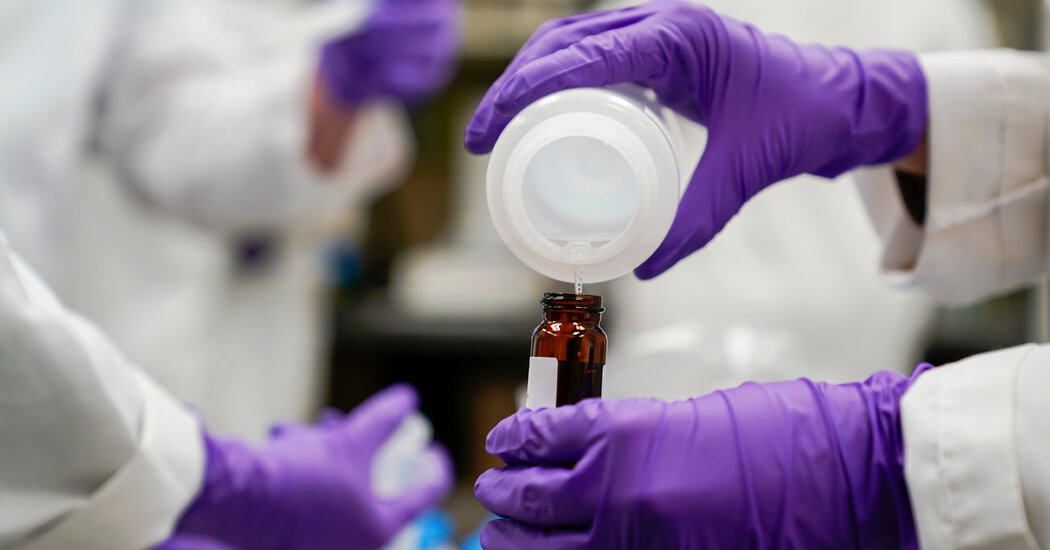
They are found in makeup, dental floss, and menstrual products. They're in nonstick pans and takeout food wrappers. The same goes for rain jackets and firefighting equipment, as well as pesticides and artificial turf on sports fields.
They are PFAS: a class of man-made chemicals called per- and polyfluoroalkyl substances. They are also called “forever chemicals” because the bonds in their chemical compounds are so strong that they do not break for hundreds or thousands of years, if at all.
They are also in our water.
A new study of more than 45,000 water samples worldwide found that about 31% of groundwater samples analyzed that were not near any obvious source of contamination had levels of PFAS considered harmful to human health by Environmental Protection Agency.
About 16% of the surface water samples tested, which were not near any known sources, had similarly dangerous levels of PFAS.
This finding “sets off alarm bells,” said Denis O'Carroll, a professor of civil and environmental engineering at the University of New South Wales and one of the authors of the study, which was published Monday in Nature Geoscience. “Not just for PFAS, but for all the other chemicals we emit into the environment. We don't necessarily know their long-term impact on us or the ecosystem.”
High levels of exposure to some PFAS chemicals have been linked to higher cholesterol levels, liver and immune system damage, high blood pressure and preeclampsia during pregnancy, as well as kidney and testicular cancer.
The EPA has proposed strict new drinking water limits for six types of PFAS and could announce its final rule as soon as this week.
For their research, Dr. O'Carroll and his colleagues compiled nearly 300 previously published studies on PFAS in the environment. Together, these studies included 12,000 surface water samples – streams, rivers, ponds and lakes – and 33,900 groundwater well samples, collected over the past 20 years. These samples don't cover the entire planet: They are concentrated in places with more environmental researchers, such as the United States, Canada, Europe, Australia and the Pacific coast of Asia.
The samples are also likely concentrated in places where people were already concerned about PFAS contamination, Dr. O'Carroll said. He warned that, as a result, the results of this new study could be distorted to show higher levels of contamination than a true global average. There is reason to believe, however, that there is some level of PFAS contamination almost everywhere on the planet, he said.
Among the countries where the studies were conducted, the United States and Australia had particularly high concentrations of PFAS in their water samples.
Among the available samples, the highest levels of contamination were generally found near locations such as airports and military bases, which routinely use foam containing PFAS to practice firefighting. About 60 to 70 percent of groundwater and surface water samples near these types of facilities had PFAS levels above the EPA risk index, which measures how dangerous mixtures of certain chemicals might be to human health, and exceeded also the limits in the EPA's new drinking water proposals. water regulations.
This research does an admirable job gathering available data and highlighting the extent of global contamination by PFAS chemicals, said David Andrews, a senior scientist at the Environmental Working Group, a research and advocacy organization, which is not was involved in this study.
Scientific research on the health effects of PFAS has evolved significantly over the past 10 to 20 years, he said, and what are considered safe exposure levels now are a small fraction of what they were a few decades ago.
The proposed EPA drinking water rules, depending on their final language, will be a big step forward, he said.
Michael Regan, the EPA administrator, said his agency plans to require utilities to treat their water so that levels of some PFAS are near zero. This requirement would make the United States one of the strictest countries in terms of regulating PFAS in water.
Dr. Andrews added, however, that while treating drinking water is important, it doesn't solve the entire problem. His research has shown that PFAS chemicals are also widespread in wildlife.
“Once they are released into the environment, they are incredibly difficult to clean up, if not downright impossible in many cases,” he said. “They can be removed from drinking water, but the definitive solution is not to use them in the first place, especially in places where clear alternatives exist.”
For example, some outdoor clothing brands are moving away from PFAS in the waterproofing of their products and towards alternatives such as silicones. Fast food restaurants can wrap their burgers in paper that has been heat-treated to make it grease-resistant or coated with PFAS-free plastic. The Department of Defense is starting to replace traditional firefighting foam with an alternative called fluorine-free foam, or F3.
Meanwhile, Dr O'Carroll said: “I'm in no way trying to say we shouldn't drink water.” He added: “It's more what I'm trying to say, from a social point of view, we need to be careful about what we put into the environment.”
